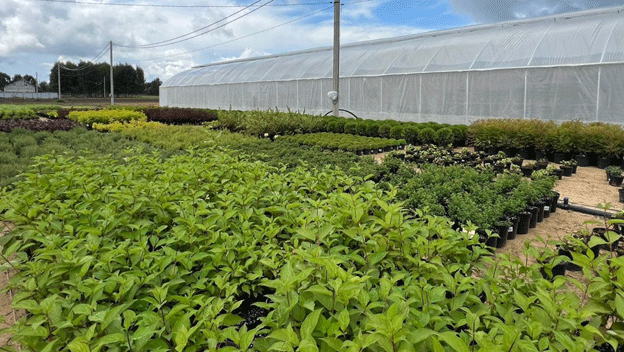Import Substitution in Action
The establishment of the Kozino Greenhouse Complex represents a significant step forward in Russia’s import substitution strategy. This initiative has gained momentum in recent years, driven by global trade disruptions and an increasing desire to strengthen domestic agriculture. The goal of the Kozino facility is to replace the plants that were once imported from Europe with locally grown alternatives that can be further cultivated in nurseries throughout Russia.
The Kozino complex has already made impressive strides, with the first phase of its development covering an area of 5,000 square meters. Backed by an investment of 150 million rubles, this initial stage is just the beginning of a larger plan. By 2027, the project will feature 10 arched greenhouses spread over a total of 1 hectare. These greenhouses, along with new production and storage buildings, will play a critical role in scaling up operations.
Ambitious Growth Plans: 15 Million Plants Annually
The Kozino Greenhouse Complex is not just a small-scale operation; it has ambitious plans for significant growth. By the time the project is completed in 2027, the complex is expected to reach a production capacity of 15 million fruit, berry, and ornamental plants per year. This scale of production will make a substantial contribution to the domestic supply of plant material, supporting the country’s broader agricultural goals.
These plants will not only be cultivated in greenhouses but also in open fields, where they will undergo further development before being distributed to nurseries. This approach ensures that plants are well-adapted to Russian conditions and are ready for further growth upon arrival at their final destinations.
Economic Impact and Sustainability
The investment of 150 million rubles in the Kozino Greenhouse Complex highlights the confidence that both public and private sectors have in the future of Russian agriculture. This project will not only contribute to the country’s food security but also create jobs and support the local economy in the Kalininsky District. With a focus on sustainable and efficient production methods, the greenhouse complex is set to become a model for other agricultural enterprises in Russia.
In terms of sustainability, the Kozino project emphasizes the use of modern agricultural techniques that minimize environmental impact while maximizing yield. The arched greenhouse structures are designed to optimize energy use, and the open-ground cultivation ensures that plants are resilient and suited to local conditions.
Industry Trends and Outlook
The move toward self-sufficiency in agricultural production is a growing trend in Russia, as global supply chains become increasingly unpredictable. According to recent data, the Russian government has been encouraging the development of greenhouse complexes across the country, with a focus on fruits, vegetables, and ornamental plants. This trend is in line with the broader global push for local and sustainable agriculture.
As of 2023, Russia has over 2,300 hectares of greenhouse operations dedicated to fruit and berry production, with several new projects in development. The Kozino Greenhouse Complex is part of this wave of innovation, representing a new chapter in Russia’s agricultural story. By 2027, projects like Kozino are expected to significantly reduce the country’s dependence on imports, contributing to a stronger, more self-reliant agricultural sector.
The Kozino Greenhouse Complex in the Kalininsky District is a clear example of how targeted investment and modern agricultural techniques can drive Russia’s import substitution strategy. By focusing on the production of fruit, berry, and ornamental plants, the facility will contribute to the country’s food security, economic growth, and sustainability efforts. As the project progresses, it will serve as a model for other agricultural enterprises across Russia, helping to build a more resilient and self-sufficient agricultural sector.










